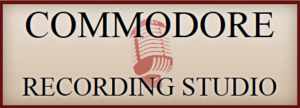Sometimes referred to as “books on tape,” audiobooks occupy a significant space in the publishing industry, with an estimated half-billion readers (listeners) worldwide. The convenience of the format is especially appealing to commuters who would otherwise not have time to sit and read. All types of books have been converted to audio, and the market grows daily. In the past decade, it has become very easy to self-publish your own audiobook, with different publishers offering various terms for online sale. But before you can upload your files and start making money, you must have a product, and it’s not as easy to create as you might think. Unlike podcasts, where ambience and “room tone” are part of a more informal experience, audiobook requirements are more stringent. To maintain quality and consistency, online publishers set guidelines for RMS/peak levels, maximum noise floor, freedom from extraneous/background noises etc. There are also specific requirements for file conversion, including mp3 bitrates, maximum file lengths and more. Additionally, the overall sound of the recording is important since someone will be listening to it for several hours, and we don’t want ear fatigue. Proper compression, EQ and leveling can improve the listening experience and ultimately influence the listener to recommend your book and perhaps even buy your next one.
There is a common tendency to want to “do it yourself” and there’s nothing wrong with that. But be aware that the USB podcast mic’s that plug right into your computer will not output a finished product. You will still need post processing to get your audio within your publisher’s guidelines. Additionally, the room in which you record matters: if you are hearing a lot of ambience from untreated bedroom walls or picking up the sound of airplanes flying overhead or your neighbor mowing his lawn, the audio will need work, and depending on the circumstance it may or may not be fixable. Also be aware that no matter how well you read, there WILL be do-overs, restarts, flubbed words, lip smacks, page turns etc., all of which must be edited out. A typical audiobook contains hundreds of edits, but if they are done well, they are imperceptible.
Obviously the best place to record this type of audio is in a properly sound-treated studio with excellent microphones and an engineer marking mistakes in real time to speed up subsequent editing, but for longer manuscripts that’s not always in the budget. One way to cut costs is to record the initial reading at home, being mindful of mic placement, ambience, and background noise. Once done, you should go through each audio file and make a note of every edit point, using minutes and seconds as a guide. With this information in hand, you can then bring the files to Commodore to perform the actual editing, audio sweetening and final processing, saving many paid studio hours, while still ending up with an excellent product.

